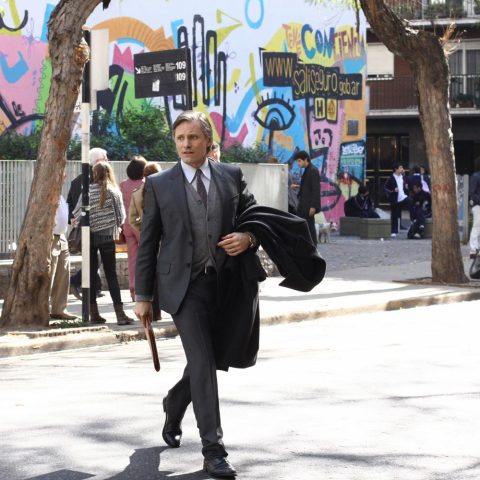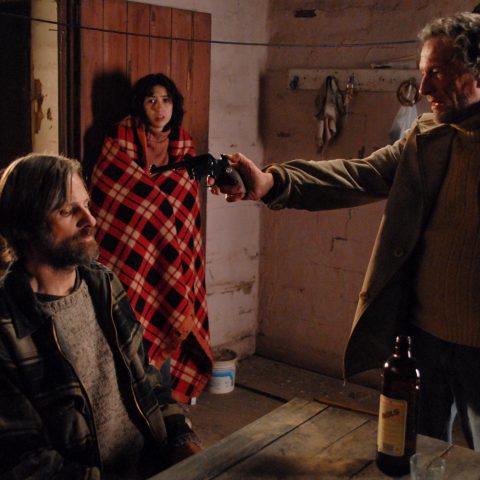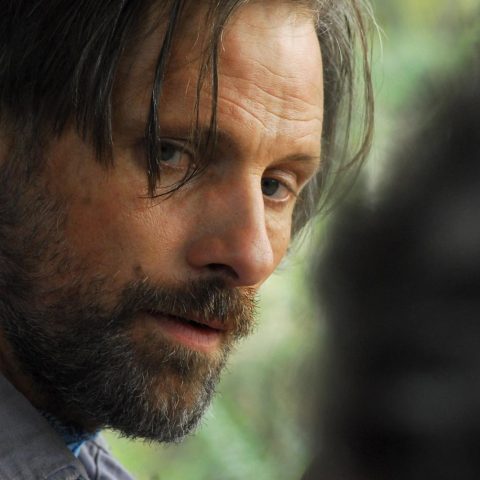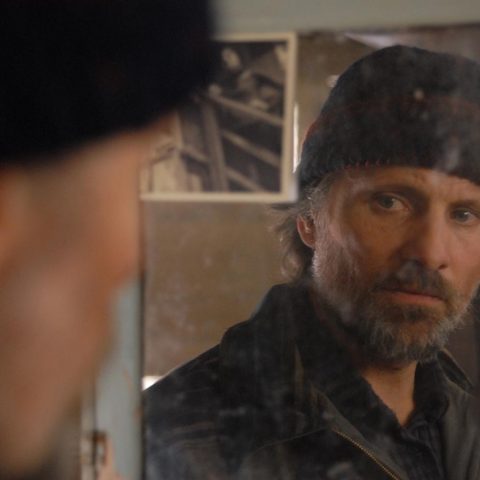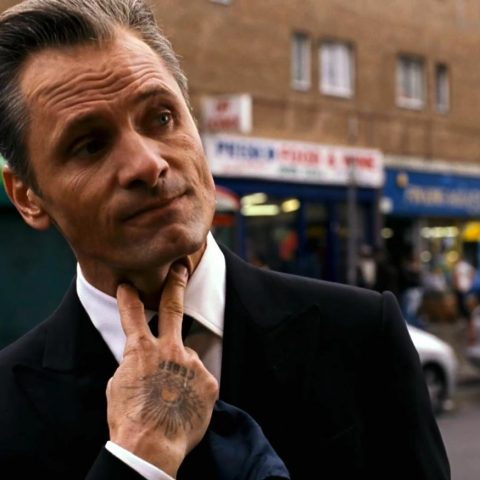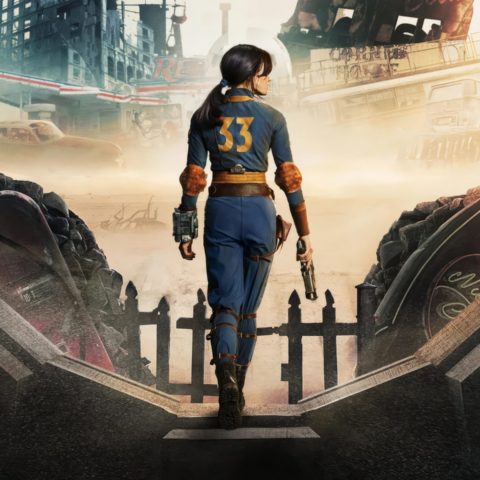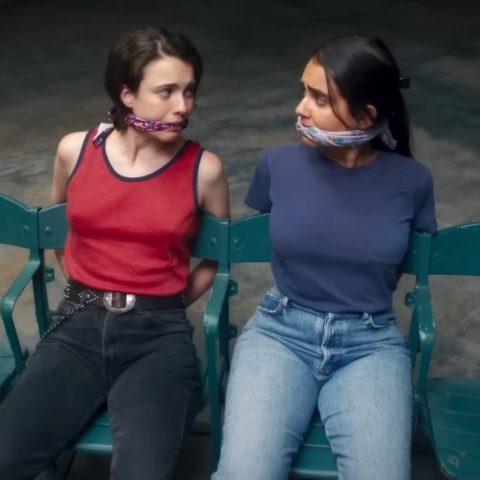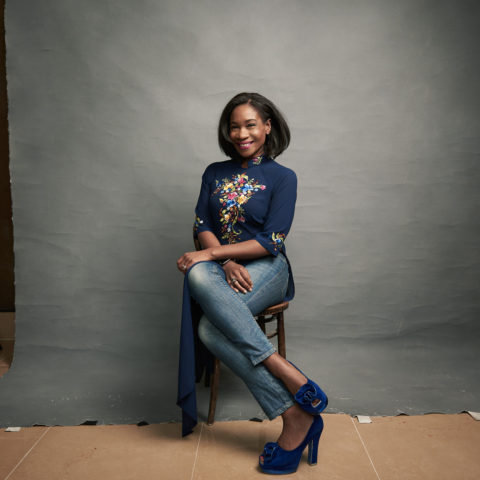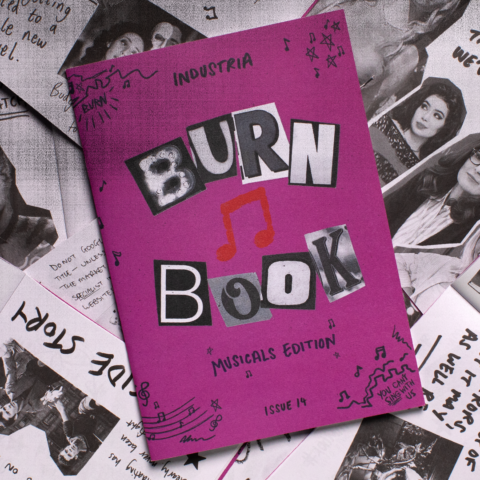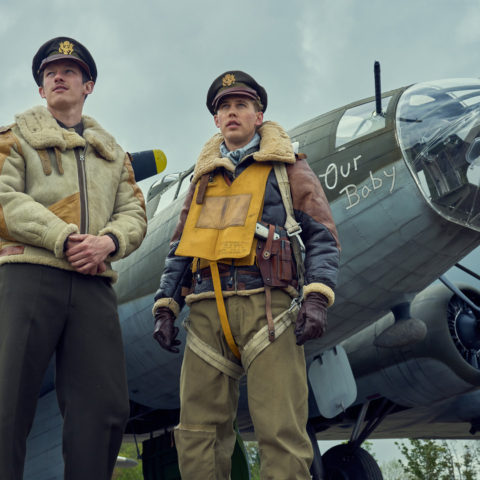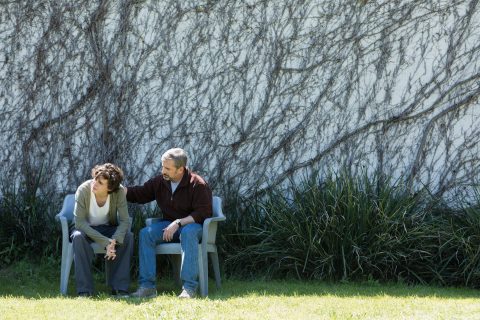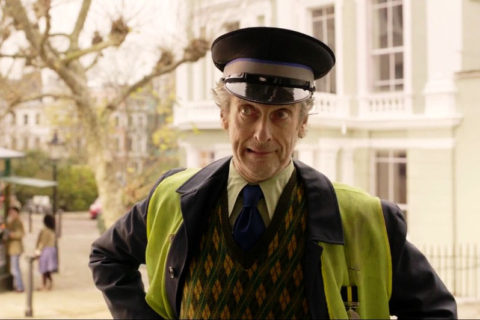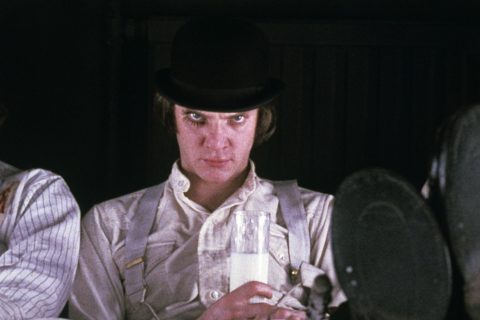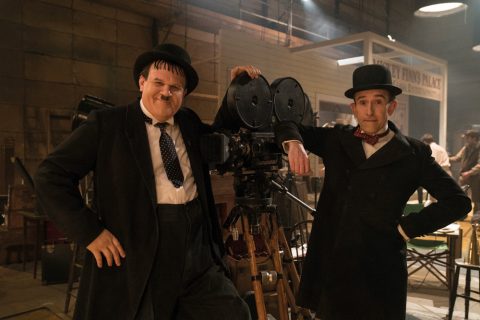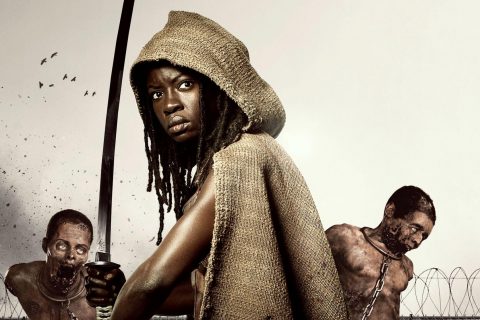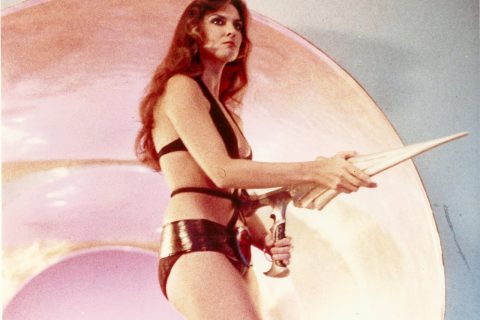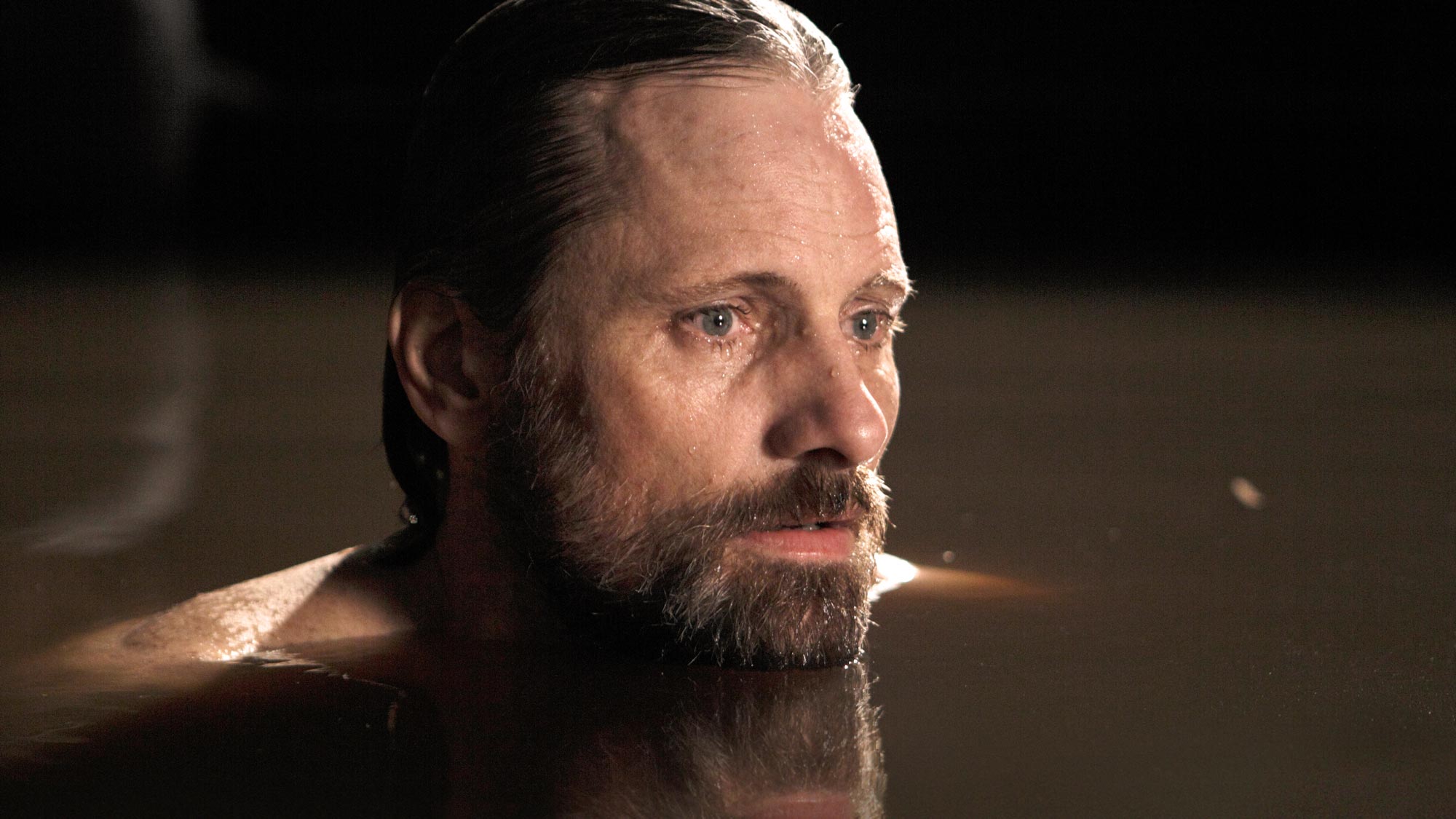
Viggo Mortensen: Double Impact
You get two Viggo Mortensen performances for the price of one in Everybody Has A Plan…
It wouldn’t be an understatement to say Viggo Mortensen is not exactly a barrel of laughs.
If you’re looking for an actor to ham it up in something like The Hangover Part III then the 54-year-old New Yorker definitely wouldn’t be first on your hit list. However if you want brooding intensity and an actor who really lives and breathes the character (“method” is too much of an overused phrase these days), then Mortensen is your man. And cinema is all the better for it.
Since his film debut in Peter Weir’s 1995 drama Witness, he’s brought that same – at times brutal – commitment to the cause in the likes of Crimson Tide, A History Of Violence, Eastern Promises, The Road and Good. And of course that’s not forgetting Lord Of The Rings in which his black leather clad king-in-waiting Aragorn was head and shoulders the best thing in it, but then his competition was a bunch of dwarfs with furry feet and some talking trees. A keen photographer, poet and painter he also owns a book publishing company Perceval Press to champion and publish the works of little-known artists and authors alongside his own work (a copy of Mortensen’s beautifully illustrated book Coincidence Of Memory sits proudly on INDUSTRIA’s coffee table).
An introspective man who doesn’t seem that comfortable thrust into the limelight, Mortensen is however putting even more of himself on display in director Ana Piterbarg’s dark, character-driven drama Everybody Has A Plan (Todos Tenemos Un Plan) by playing twin brothers. Set mainly in Argentina’s swampy Tigre Delta, the moody Spanish-language film also marks the first time that the actor has made a movie in the country where he spent part of his youth (his father managed chicken farms in Venezuela and Argentina).
Twins with very different lives, Agustín is a doctor in Buenos Aires who sees an opportunity to escape his comfortable but unhappy existence when his terminally ill brother, Pedro, turns up unexpectedly on his doorstep. He assumes his sibling’s identity and swaps the city for the harsh environment of the Tigre Delta where they grew up, only to find himself dangerously entangled in Pedro’s criminal past.
The unassuming and deep (be prepared, at one point he recites a poem…) actor talked to INDUSTRIA about the challenge of playing twins, hanging out in cowboy bars, forever being known as Aragorn from Lord Of The Rings and filming that butt naked knife fight in Eastern Promises…
This is the first film that you have made in Argentina. Have you been wanting to work there for a while?
Yes, although I had made a few movies in Spanish over the years, I had never worked on an Argentine one. Having been partly raised there, and knowing that Argentina had a long tradition of producing good movies, I’d been looking for a chance like this.
To what extent were you drawn by the idea of playing twin brothers?
That aspect of Ana Piterbarg’s story was not the main attraction for me. What I found interesting was the overall tension in the screenplay – not just that which resulted from the awkwardness between the estranged twins. The first time I read her script, it was clear to me that there was conflict present in the various relationships of all the main characters. There was also an overall duality inherent in the physical spaces that these characters occupied – between the enormous metropolis of Buenos Aires and the backwaters of the delta region, between the city and the river. Ana’s script was a very original take on the film-noir thriller genre.
They parted ways in their youth, one staying on the island, the other moving to the city.
Having spent most of my infancy in the Buenos Aires region, I had the advantage of being familiar with the locations we were to film in, as well as the types of Spanish spoken there. During pre-production I updated my knowledge of the city centre and the sorts of people that resembled Agustín, the brother who is a middle-class doctor living in his wife’s attractive apartment. I also spent time in the delta region near the city of Tigre in order to prepare the other brother, Pedro, who lives in more humble circumstances, as a sort of an outlaw hermit. Pedro is also a bee-keeper, and, along with Sofía Gala (who plays Rosa), I took lessons in apiculture. We gradually became fairly good at working with the bees and actually made some very tasty honey. When you are in the middle of many thousands of bees it can be deafening. Once you get past the fear of being stung, the noise almost works as a calming factor if you allow it to – sort of like the constant, low roar you adapt to on airplane flights.
As someone who has moved around quite a lot in his lifetime, how much influence do you think environment has on a person’s character?
The more I travel, the more I like it and the more I feel “at home” everywhere. I feel, however, that the environments we spend the first 15 or 20 years in do have an important influence on our character. I grew up in both rural and urban areas, moving frequently. In my early adolescence I experienced a drastic change in the physical surroundings and climate my brothers and I lived in. Now there was snow in the winter, quite different vegetation, language, food, social customs, schooling, everything was new to us. What I had grown up with in Argentina until the age of 11 stayed with me, though. I believe that the expansion of horizons in terms of culture and natural surroundings, have all affected my world-view and formed my likes and dislikes to a large degree.
Was it challenging to film in the Tigre Delta?
Yes because of the logistical complications of transporting everyone and everything necessary for the filming by boat. The tides and water levels are variable in that area, and that presented a daily challenge. The fact we shot in the dead of winter also made it a bit harder on us with shorter, colder days with icy nights. It was essential for the look of the movie that we filmed in winter though, the bleakness of the foliage and the flatness of the light turned the natural environment into an additional, somewhat mysterious character in the story.
How important is it for you to understand a character’s environment when building a performance?
I will answer by quoting part of a poem by Wislawa Szymborska:
I am who I am.
A coincidence no less unthinkable
than any other.
I could have different
ancestors, after all.
I could have fluttered
from another nest
or crawled descaled
from another tree.
Nature’s wardrobe
holds a fair
supply of costumes:
Spider, seagull, field mouse.
Each fits perfectly right off
and is dutifully worn
into shreds…
Beautiful. Have you ever found yourself in a difficult situation while preparing a role?
When you open the doors and windows to experience, any kind of thing can fly or crawl inside. It is also difficult when one appears to come to a dead-end in preparing a part, when one must reevaluate the direction one has chosen to take the research in. The main remedy, as with the profession in general, is to stick with it until something of value reveals itself to you. That is the process, the way to understand and improve what you are doing, no matter how boring or fruitless it may sometimes seem.
One of your first roles was in Renny Harlin’s The Prison in 1988, what do you remember from the making of that?
It was fun to shoot in Rawlins, Wyoming. I got married during the shoot, travelling to Fort Robinson, Nebraska to do so. The ceremony, witnessed by three good friends, took place on the very spot where Crazy Horse was betrayed and murdered. We had a good time working in the old Wyoming State Penitentiary, which had been closed for about six years. Supposedly Butch Cassidy did some time in it. In one of the abandoned cells we used for the filming, a prisoner had written out the lyrics to Dylan’s “All Along The Watchtower”. The letters were faded, but you could still make out the words. There were a couple of old-fashioned cowboy bars I used to frequent in that town, sometimes to play pool and sometimes just to have a drink. The Rifleman was one of them. I also used to go fishing for trout not far from Sinclair, on the North Platte River, and the motel we stayed at in Rawlins had a public barbecue stand in the middle of its grassy courtyard, and I used to grill the trout on that. I have returned to Wyoming many times over the years, but usually crossing the northern part of the state, through the Bighorn Mountains on the way to and from the Northwest. Occasionally I run across a movie I’ve done a long time ago, usually on a hotel room TV, and I enjoy thinking about things peripheral to the filming that happened. The places we were for the filming, the people I met, the things we learned together. It is sort of like being stimulated by looking through a photo album; you end up thinking about all kinds of things that have nothing to do with the photographs.
Of your Turkish bath house fight scene in Eastern Promises, famed reviewer Roger Ebert said: “Years from now, it will be regarded as a benchmark.” Did it feel like you were doing something special when you shot that scene?
Not much. We simply tried to follow the choreography we had rehearsed and played our roles with the commitment required. It was awkward and slightly painful at times, but I think that one of the strengths of the scene is that we didn’t glamourise or exaggerate the action.
Was it a difficult scene to shoot?
Sometimes it was painful, owing to the impossibility of wearing pads for the more violent physical action, including the hard landings.
There’s been talk of a sequel?
I have no idea if a sequel is going to happen at this point, but in principle it could make for a good movie.
In physical terms, what has been your most difficult role to date?
I tend to throw myself into the preparation and playing of each role to the point of exhaustion. If I had to single out a recent project I’d say The Road. There was hardly ever any let up in the extreme conditions, and the emotional work required of Kodi (Smith-McPhee) and myself was physically tiring as well. We were pretty gaunt for that job, and that didn’t help much either in the physical area. It looked right enough on film, but we definitely struggled at times.
You have worked with David Cronenberg three times. What do you think makes your relationship special?
Respect, friendship, and a similar sense of humour.
It was reported that you were reluctant to play Freud in A Dangerous Method.
I was not sure of being the right type physically-speaking, and was also a bit unsure of being the right actor to handle the character’s dialogue properly. I’m very glad I decided to accept David’s offer, though. Freud was an enjoyable part to play.
Cronenberg said you’re the only actor he knows who goes on holiday and collects items to use on a film. Why do you collect these kinds of totems and how do they help you as an actor?
It may be that I’m a bit like crows and ravens – I am attracted to unusual objects, shiny things, and like to pick them up for later use. I’ve always liked to familiarise myself with a character’s reading material, clothing, the objects he interacts with or might interact with. Sometimes I find objects or ideas in the preparatory stage that later prove quite useful in the playing of a role. It is not necessary to actually find any specific thing in research, The mere act of looking and imagining what might suit the character and the story, already puts me on the right path.
What would you say is the strangest thing you have brought to a set?
An embalmed goose might be a good candidate.
That is pretty strange. It was rumoured at one point that Peter Jackson was looking for a way to bring Aragorn into The Hobbit. Was that something that you ever discussed?
Apparently it was just a rumour, because I haven’t heard from Peter about joining the project.
You’ve been working on The Two Faces Of January. Can you tell us anything about your role in that?
In that movie I play a quintessential American con-artist, a World War II veteran who skips from one European capital to another in 1962 with his lovely wife, always one step ahead of the law and various angry creditors. It was as different from previous parts I’ve played as Freud was. Working under Hossein Amini was a professional and personal pleasure, as was acting opposite Kirsten Dunst, Oscar Isaac, and David Warshofsky.
That, like The Road, is a literary adaptation. Do films adapted from books often give you more to sink your teeth into?
No, I don’t think so. Adaptations are entirely different animals, usually as unique as original screenplays are. In the case of The Two faces Of January, much as I like Patricia Highsmith’s novel, I think Hossein Amini’s take on the story is more layered, even-handed, and emotionally engaging than the book.
Would you like to direct?
If I were to direct a movie, it is very unlikely that I would want the distraction of acting in the story as well. Not impossible to do – many actors have a go at it, some successfully – but it doesn’t seem like a good idea to me.
In 2011, you returned to the stage for the first time in almost two decades in Ariel Dorfman’s Purgatorio in Madrid. How did it feel after such a long gap?
It was frightening, educational and constantly rewarding. I had missed the need to make adjustments on the fly, with a live audience listening to our every word and watching every move you make.
Do you get nervous before going on stage?
Always. Fear is my friend.
What’s next for you?
An as-yet-untitled movie in Argentina, to be directed by Lisandro Alonso, and a movie adaptation of an Albert Camus short story set in Algeria in the 1950s, to be shot in North Africa. That one is written and directed by David Oelhoffen. At Perceval Press we have a new book coming out shortly, called Children of the Forest – The Ethnographic Photography of Max Schmidt. It contains many beautiful photos taken on his pioneering visits to different Lower Amazonian tribes a century ago.

